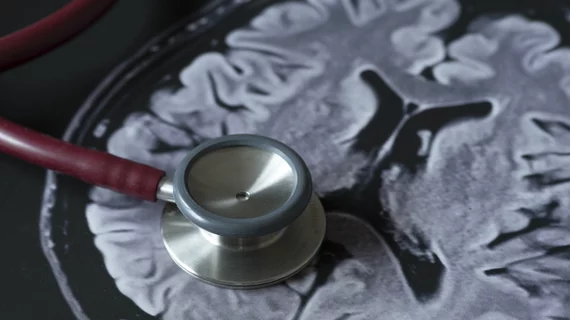Radiologists must be aware of side effects from new Alzheimer’s treatments, study warns
Radiologists must be aware of potential side effects from new Alzheimer’s treatments, experts warned in a study published Thursday.
Two years ago, the U.S. Food and Drug Administration granted accelerated approval for aducanumab, sold under the brand name Aduhelm, to address the irreversible brain disorder. The decision came after the agency determined this monoclonal antibody demonstrated success in reducing amyloid-beta plaques in the brain, producing possible benefits to patients.
However, increased Aduhelm use also comes with potential abnormalities, including swelling, effusion or hemorrhaging in the brain, experts wrote in the journal RadioGraphics [1]. Such amyloid-related imaging abnormalities, or ARIA, spotted on magnetic resonance imaging, are believed to arise following the inflammatory response, leading to the leakage of blood products and other fluid in surrounding tissues, researchers noted.
“It is essential for the radiologist to recognize and monitor ARIA,” lead author Amit K. Agarwal, MD, a neuroradiologist at the Mayo Clinic in Jacksonville, Florida, said in an Aug. 31 announcement from the Radiological Society of North America. “As the use of monoclonal antibodies becomes more widespread, close collaboration between neurologists and radiologists is needed before and during therapy to plan for image monitoring per established guidelines.”
Swelling or effusion are the most common side effects from treatments such as Aduhlem, the authors noted. Previous phase 3 trials found this occurs in about 35% of patients who received the approved dose of the drug, occurring between the third and sixth months of treatment. Patients experiencing these symptoms typically did not display any outward symptoms, and the issue resolved itself 98% of the time at follow-up imaging. Meanwhile, hemorrhaging occurred in 15% to 20% of individuals treated, and this side effect commonly did not resolve itself over time.
Agarwal and colleagues advised that most patients with asymptomatic amyloid-related imaging abnormalities can continue receiving treatment, including the “vast majority” with swelling or effusion. For those experiencing hemorrhaging, treatment decisions will depend on the severity and stability of symptoms. Ten or more new microhemorrhages signal the need to permanently discontinue use of the drug, experts advised.
“A multidisciplinary approach with a small core group of neurologists and neuroradiologists with knowledge about the technical aspects and imaging appearance forms the bottom line for successful aducanumab therapy implementation,” the study advised. “It is imperative that radiologists are trained in the basics of the technical and scientific aspects of ARIA.”
RSNA also published a corresponding editorial [2] with the study. Find links to both below.

